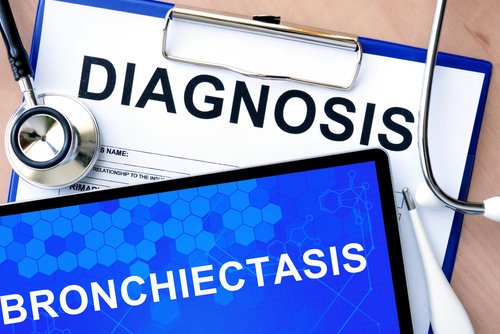Up to 62 percent of adults with bronchiectasis also have chronic rhinosinusitis (CRS), which is associated with poorer quality of life, a greater degree of disease severity, and more extensive radiological bronchiectasis, according to a study.
The study, “Prevalence and Clinical Implications of Chronic Rhinosinusitis in People with Bronchiectasis: A Systematic Review,” was published in The Journal of Allergy and Clinical Immunology: In Practice.
Chronic rhinosinusitis is the chronic inflammation of the upper respiratory tract nasal passages (sinuses), a condition that has been reported in patients with bronchiectasis.
Bronchiectasis is characterized by irreversible dilation of the bronchi and bronchioles in the lower respiratory tract, repetitive lung infections, cough, and excessive sputum production.
Because the upper and lower respiratory tracts share the same mucosal lining, CRS could conceivably affect the severity and symptoms of bronchiectasis. For example, secretions from the upper airway containing bacteria could migrate to the lower airway.
However, the prevalence and clinical implications of CRS in bronchiectasis are unclear.
To clarify how CRS may affect bronchiectasis patients, researchers in Australia searched four medical databases to retrieve and analyze published studies reporting on the prevalence and/or clinical impact of CRS in individuals with bronchiectasis.
Eight studies with 797 participants (all adults) were included. Four studies were conducted in Spain, three in China, and one in Australia. The mean FEV1% (forced expiratory volume in one second; a measure of lung function) of participants was 77.7%. FEV1% is the amount of air that can be forcibly exhaled from the lungs in the first second of a forced exhalation. Normal values are considered to be 80% or higher.
Investigators found that 62% of adults with bronchiectasis also had CRS, which was associated with poorer quality of life, based on the health-related quality of life questionnaire responses, measuring the perceived physical and mental health of an individual over time.
CRS was also associated with a greater degree of disease severity, based on high-resolution computed tomography pulmonary scan scores and the bronchiectasis severity index — which combines clinical, radiological and microbiological features to assess disease severity.
CRS was also linked to a reduced sense of smell, elevated levels of inflammatory markers, and shorter time to first exacerbation.
In contrast, the association of CRS with airflow obstruction, based on FEV1% values, was inconsistent.
Nasal polyps, which are soft, painless, noncancerous growths on the lining of the nasal passages or sinuses, can accompany CRS. The team found that the presence or absence of nasal polyps in those with CRS did not influence lung function or measures of disease severity.
Treatment options for CRS include nasal saline irrigations, medicines such as mucolytics, and surgery.
These findings “highlight the importance of considering clinical screening for CRS in patients with bronchiectasis and identifying optimal management,” the researchers wrote.
“Further research to establish optimal patient-centered treatment options for CRS in bronchiectasis, and the effect on HRQOL [health-related quality of life ] would be of value to clinicians,” they added.

